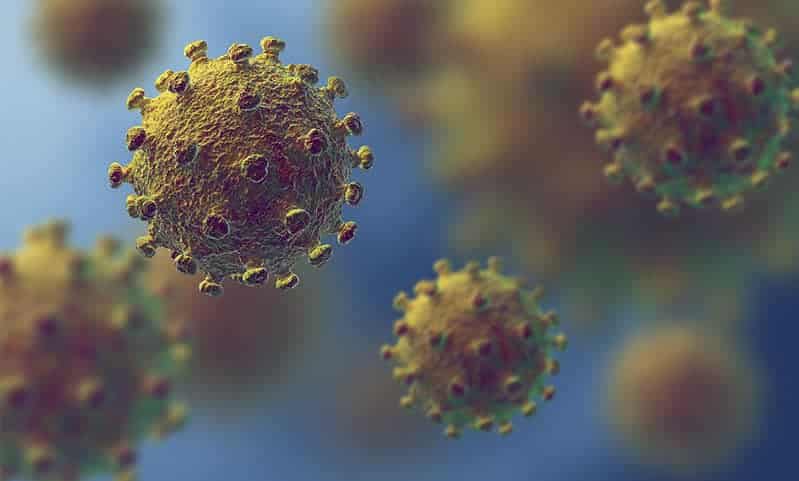Some experts predict that the COVID-19 virus might be infinitely more dangerous than the early 2000s SARS outbreak which killed 800 people and infected about 8,000 others.
The warning came as the casualty count in China continues to climbed to 2,700 infections and 80 deaths.
According to models, the number of domestic infections could reach 200,000.
Coronavirus cases have also been confirmed in Japan, Korea, the United States, and other places.
All the foreign victims had travelled to Wuhan, a large Chinese city which is about halfway between Beijing and Hong Kong. Chinese Health Minister Ma Xiaowei has authorized strict measures to control the spread of the virus, which has entered a “crucial stage.”
These strict preventative measures include mass quarantines and travel restrictions.
Do Preventative Measures Work?
During the aforementioned SARS outbreak, officials used quarrentines and, to a lesser extent, surgical masks to contain the disease. Without such measures, the SARS epidemic could have been much, much worse.
Thus far, both the Chinese government and Chinese individuals have taken such measures to limit the spread of the coronavirus.
However, the same things might not work this time.
he coronavirus has an extended latency period. Infected people could be sick for up to a week before they display any symptoms.
That incubation period makes quarantines less effective. Officials cannot separate the sick people from the well people.
Quarantines have logistical problems as well.
Wuhan, the epicenter of the COVID-19 epidemic, has eleven million people.
Furthermore, like many large cities, Wuhan sprawls into suburbs.
So, it’s impossible to set up roadblocks everywhere. And, Wuhan’s configuration makes it difficult to know where to draw a quarantine line.
These efforts might be in vain anyway.
The World Health Organization took note of the Wuhan virus on December 31, 2019. Yet Chinese government officials did not take preventative measures for another three weeks.
So, a quarantine might be like bolting the barn door after the horses have escaped.
Many people wear surgical masks to limit the effects of pollution on the body and, more importantly for purposes of this blog, minimize the spread of infection.
Masks which cover the mouth and nose often block the spread of hand-and-mouth infections, such as flu. Most people touch their faces about two dozen times every waking hour.
But masks do not completely prevent infection. The eyes are exposed. Furthermore, masks do not seal the mouth and nose.
Individual Safety Responsibility and New York Law
Similar issues often come up in personal injury cases, mostly car crash and motorcycle crash claims.
Failure to wear a seat belt or wear a motorcycle helmet spring immediately to mind.
New York has one of the broadest mandatory seat belt laws in the country.
Everyone in a vehicle, including both front seat and back seat occupants, must be properly restrained.
However, the Empire State has one of the most limited seat belt defense laws in the country.
Evidence of seat belt non-use is only admissible in the damages portion of a civil trial. To effectively use the seat belt defense, insurance company lawyers must do more than cite safety statistics.
They must summon doctors to the stand who testify that seat belt non-use proximately caused the victim’s injuries. Such testimony is not always available, and these witnesses are not always convincing.
Similarly, New York is one of a dwindling number of states with a universal motorcycle helmet law.
But evidence of non-use is only admissible for limited purposes during a personal injury trial.
There have already been several confirmed coronavirus cases in the United States.
The law varies in different jurisdictions, but generally, the failure to wear a surgical mask is like the failure to wear a seat belt or motorcycle helmet.
Even if the victim could have taken additional preventative measures, the victim might still have legal options.
Airlines often fail to properly screen potentially infected patients, even if there are red flags, like travel in the Wuhan vicinity.
Many hospitals are similarly negligent. If an airline or hospital breached its duty of care, and that breach substantially caused injury, the airline or hospital could be responsible for damages.
The damages in a coronavirus or other infectious disease claim could include compensation for economic losses, such as medical bills, and noneconomic losses, such as pain and suffering.
Even if victims did not do everything possible to keep from getting sick, compensation might still be available.
For a free consultation with an experienced New York personal injury attorney, contact Napoli Shkolnik PLLC. Attorneys can connect victims with doctors, even if they have no insurance or money.
